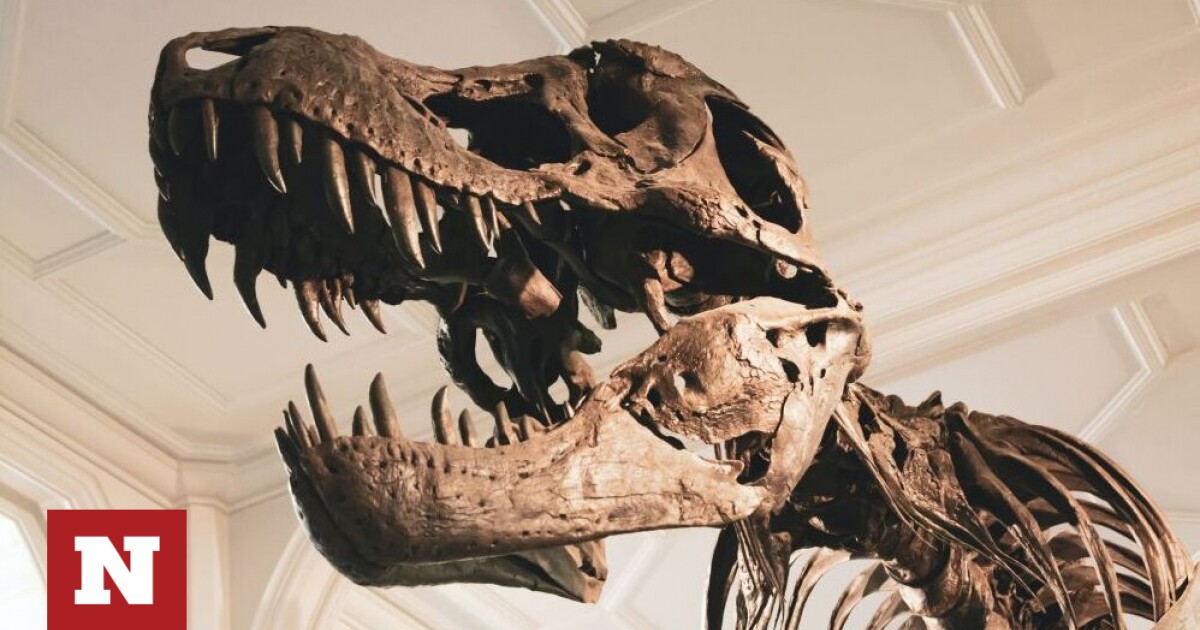
How did scientists decipher the last meal of a 75-million-year-old Tyrannosaurus rex?
Dinosaurs disappeared from our planet millions of years ago, but researchers do not stop searching for more information about the huge animals.
Somehow, according to the BBC, “unshakeable evidence has been found that dinosaurs radically changed their diet as they aged,” said Darla Zelenitsky, of the University of Calgary.
The specimen is a young Gorgosaurus – a close cousin of the giant Tyrannosaurus rex.
This Gorgosaurus was about seven years old, which is equivalent to the age of a teenager in terms of development. At the time of his death, he weighed about 330 kilograms, about a tenth of the weight of a full-grown adult.
Under the rib cage, the hind limbs of two small bird-like dinosaurs were seen.
“We now know that these juvenile dinosaurs preyed on younger, smaller dinosaurs,” said Dr. Zelenitsky, one of the lead scientists on the study published in the journal Science Advances.
A series of early fossil evidence has allowed scientists to build a picture of how adult three-ton gorgosaurs attacked and ate very large herbivorous dinosaurs that lived in herds.
Dr François Therin, of the Royal Tyrrell Museum of Paleontology, described these adult dinosaurs as “fairly indiscriminate eaters”. He told BBC News they likely attacked large prey, “biting the bones and scratching the flesh.”
But Dr Zelenitsky added: “These smaller, immature dinosaurs may not have been prepared to attack a group of horned dinosaurs where adults weighed thousands of pounds.”
The discovery was made in 2009 but the secret was only recently revealed
The fossil was originally discovered in the Alberta Badlands in 2009, and is a magnet for dinosaur hunters.
Buried in the rock, it took years to prepare and it was not immediately obvious that there was prey inside. Staff at the Royal Tyrrell Museum of Palaeontology in Alberta eventually noticed small leg bones protruding from the thorax.
“The rock inside the chest was removed to reveal what was hidden inside,” explained Dr. Therrien, who was also involved in the study. “And here they are – the complete hind legs of two young dinosaurs, both less than a year old.”
Dr. Zelenitsky said finding only the legs indicated that this juvenile dinosaur “appears to have wanted drumsticks – perhaps because that is the meatiest part.”
Gorgosaurus is a slightly smaller and older species of T. rex. At full growth, these were, in Dr. Therrien’s words, “large, robust tyrannosaurs.”
Professor Steve Brusatte, a paleontologist from the University of Edinburgh and the National Museum of Scotland, said seeing the prey in the dinosaurs’ intestines gave a real picture of the animals: “They were not just monsters, they were real living creatures, very living beings.” The advanced animals they were feeding on.”
Recalling the depiction of the T. rex in the 1993 film Jurassic Park — in which the giant dinosaur chases a car through a fictional theme park — the professor noted:
“A large T. rex could not have chased a car – if there had been cars or jeeps at the time – its body was too big and it could not have moved that fast.
“It’s going to be the little ones – like this Gorgosaurus – the T-Rex babies that you have to watch out for.”

“Avid problem solver. Extreme social media junkie. Beer buff. Coffee guru. Internet geek. Travel ninja.”





More Stories
In Greece Porsche 911 50th Anniversary – How much does it cost?
PS Plus: With a free Harry Potter game, the new season begins on the service
Sony set to unveil PS5 Pro before holiday season – Playstation